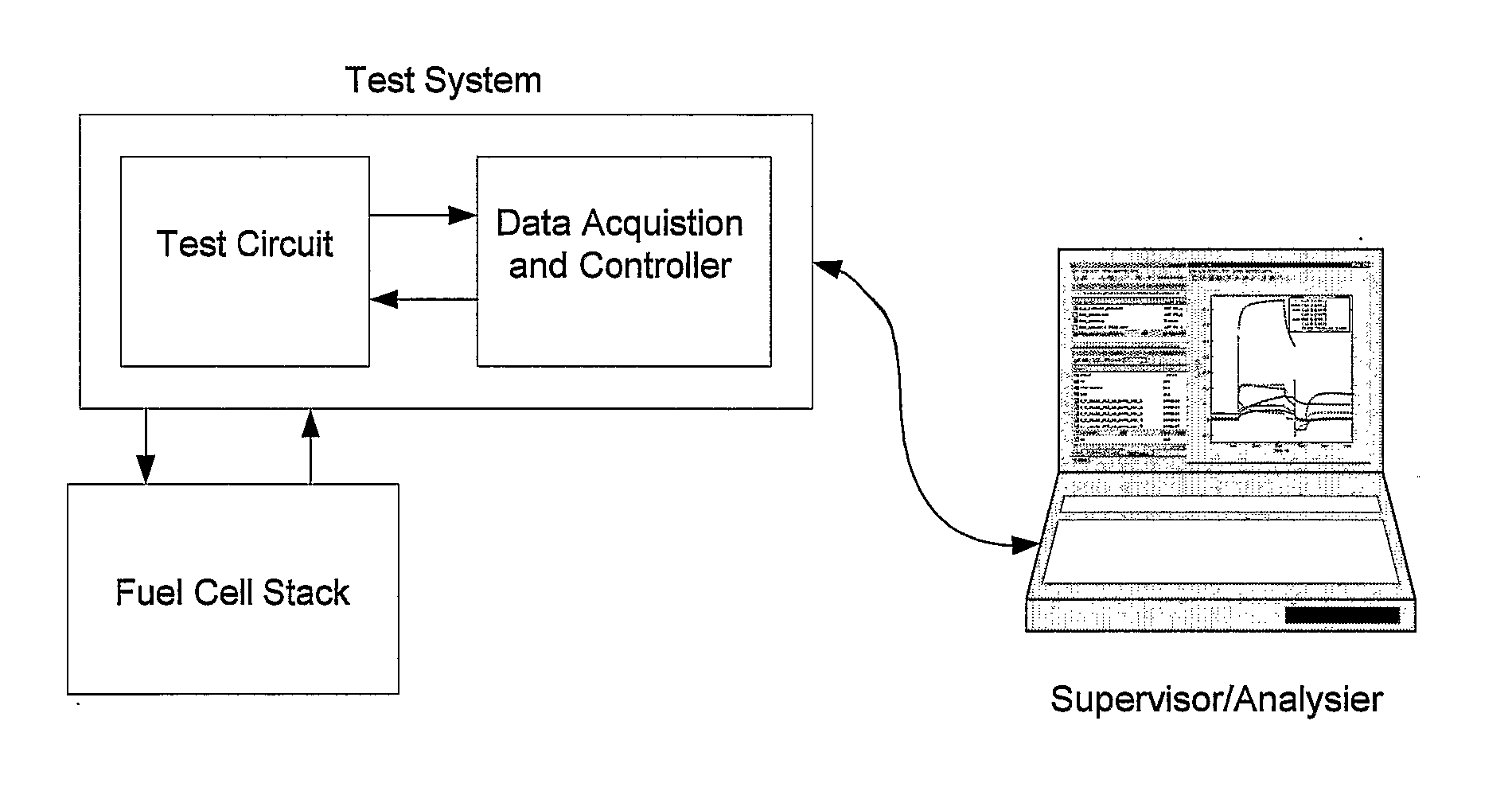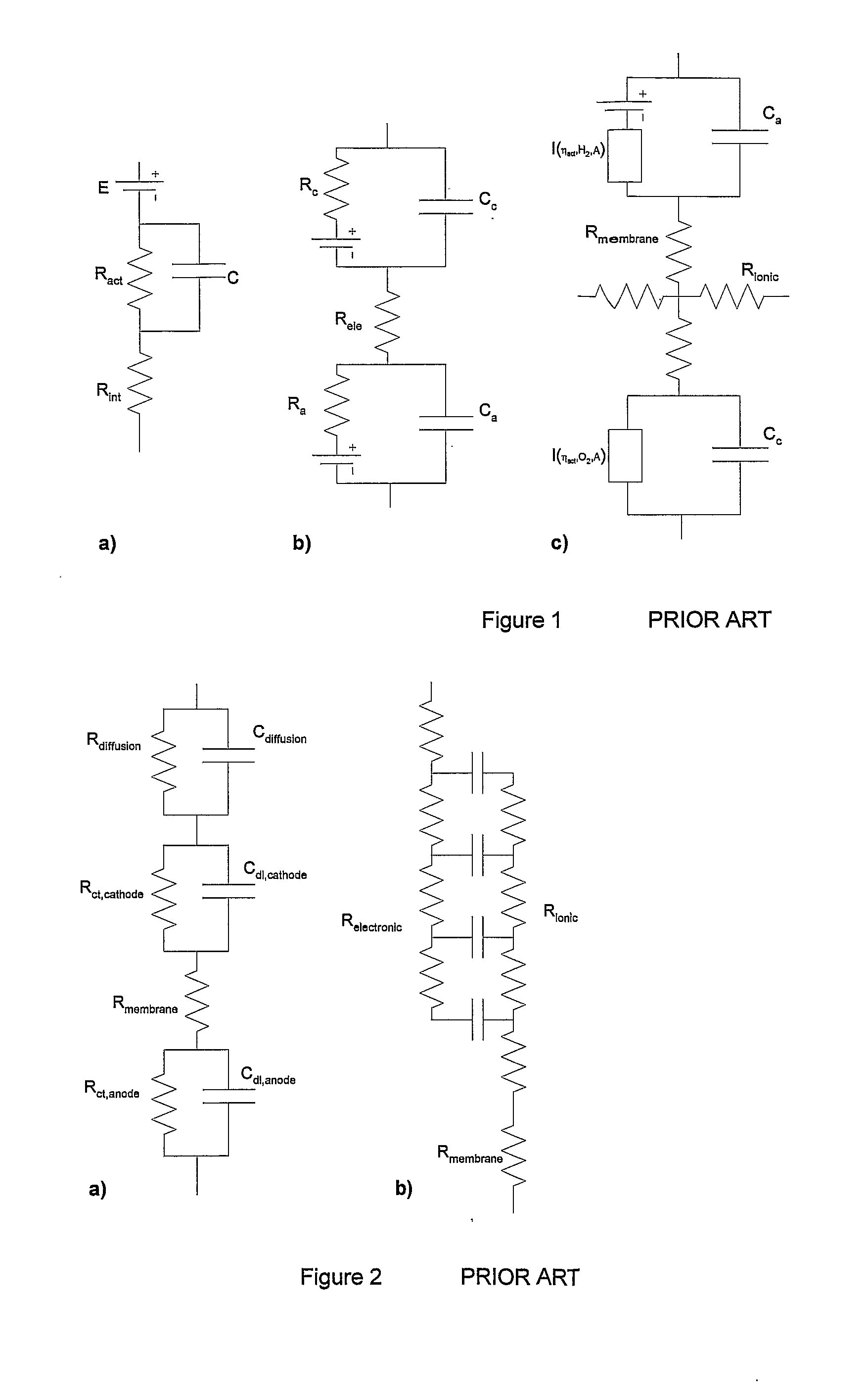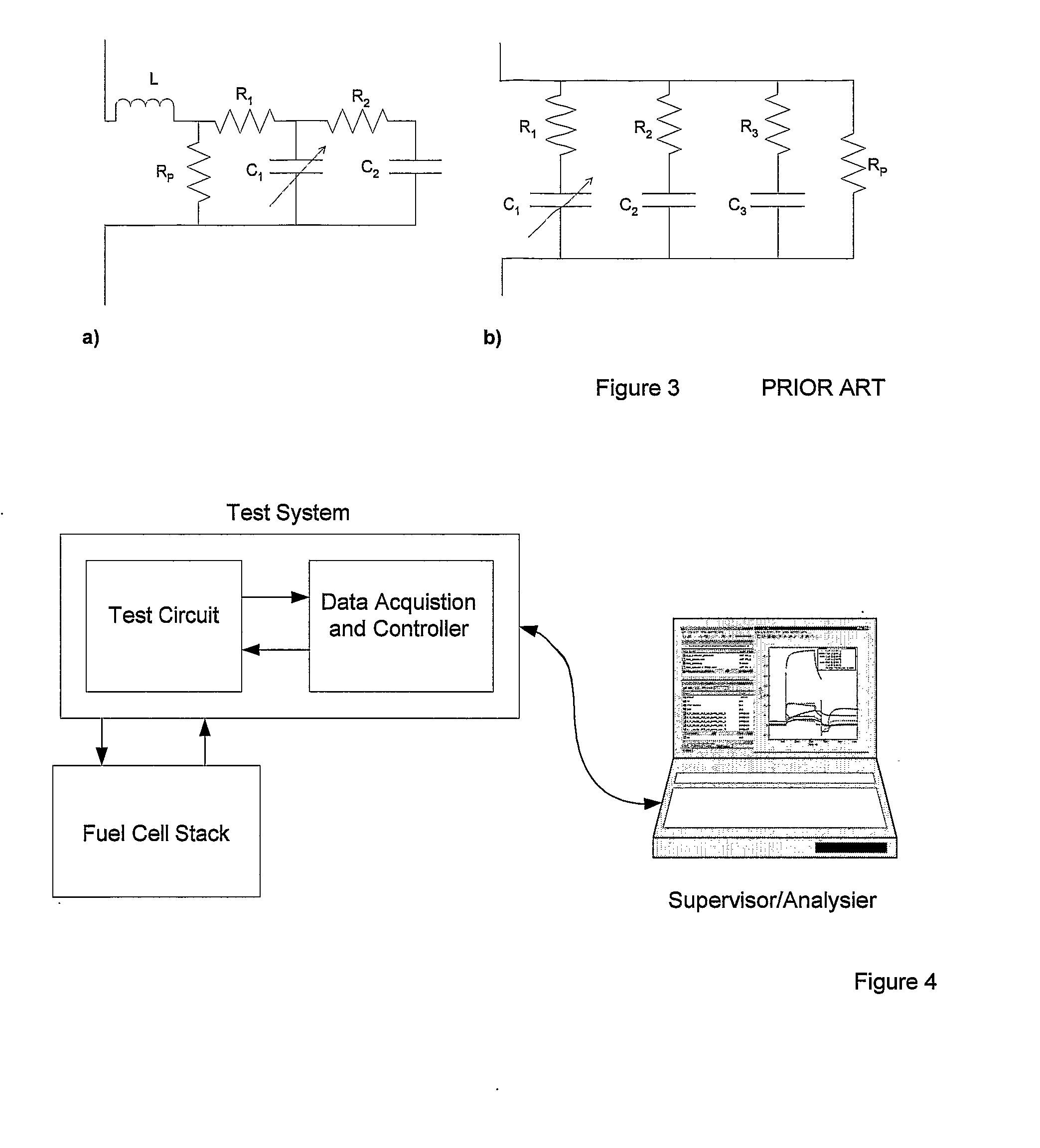Method of Testing an Electrochemical Device
a technology of electrochemical devices and electrochemical devices, which is applied in capacitor testing, fuel cell testing, electric vehicles, etc., can solve the problems of confined fuel cell testing methods, inability to implement testing in an application setting, and other loss terms identified, so as to achieve simple computation time and facilitate extended
- Summary
- Abstract
- Description
- Claims
- Application Information
AI Technical Summary
Benefits of technology
Problems solved by technology
Method used
Image
Examples
experimental embodiment
3.4 Specific Experimental Embodiment
[0079]The testing procedure has been implemented on a small PEM fuel cell stack manufactured by MerCorp. The stack contained 6 cells stacked in series, each with an active area of 32 cm2 and a Nafion based membrane. The stack design is completely symmetrical i.e. the gas flow-field design and electrode structures for the anode and cathode are identical. The test circuit component values were R1TC=100Ω and R2TC=4.9Ω, with VTC being set at a variety of values depending on what test was being implemented. For data acquisition and control, an HP 34970A Data Acquisition / Switch Unit was used, which contains an internal digital multi-meter for measurement purposes. The Data Acquisition / Switch Unit contained an HP 34901A 20-Channel Multiplexer card (enabling all of the cell voltages, stack terminals and the voltage across R1TC to be measured) as well as a HP 34907A Multifunction Module (which provided outputs for control of the test circuit). A P4m 2 GHz ...
PUM
| Property | Measurement | Unit |
|---|---|---|
| area | aaaaa | aaaaa |
| temperature | aaaaa | aaaaa |
| temperature | aaaaa | aaaaa |
Abstract
Description
Claims
Application Information
 Login to View More
Login to View More - R&D
- Intellectual Property
- Life Sciences
- Materials
- Tech Scout
- Unparalleled Data Quality
- Higher Quality Content
- 60% Fewer Hallucinations
Browse by: Latest US Patents, China's latest patents, Technical Efficacy Thesaurus, Application Domain, Technology Topic, Popular Technical Reports.
© 2025 PatSnap. All rights reserved.Legal|Privacy policy|Modern Slavery Act Transparency Statement|Sitemap|About US| Contact US: help@patsnap.com



